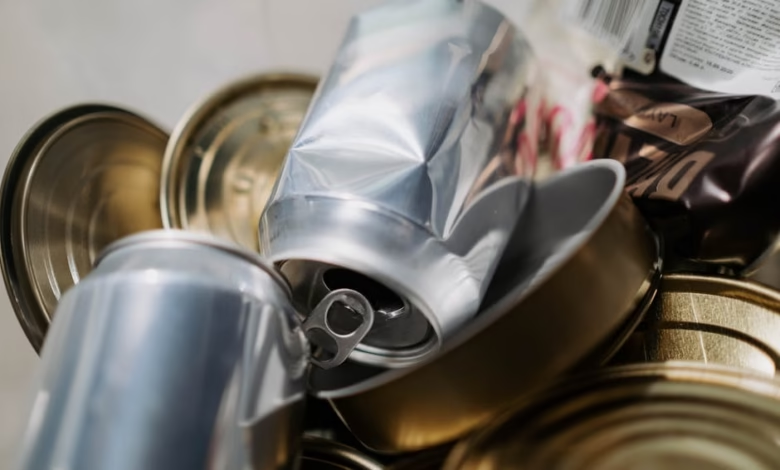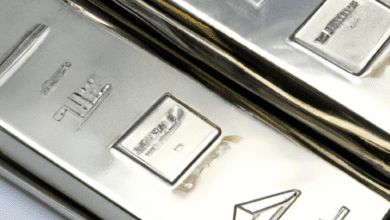Metal Recycling Uncovered: Processes, Market Trends, and the Future of Sustainable Metal Production

Metal recycling has emerged as a vital component of modern sustainability efforts, addressing the growing demand for raw materials while reducing the environmental impact of metal mining. As industries increasingly recognize the benefits of reusing metals, the processes involved in recycling scrap metals have become more sophisticated, paving the way for a more circular economy. This article delves into the intricate world of metal recycling, exploring the various processes that transform scrap into valuable resources, the types of metals involved—ranging from ferrous and non-ferrous metals to precious metals—and the significant benefits that recycling offers.
In addition to understanding the fundamental aspects of metal recycling, we will examine current market trends that highlight the shift towards a more sustainable approach to metal commodities. Whether it’s industrial metals like steel and aluminum, or precious metals such as gold and platinum, the recycling landscape is evolving to meet the demands of various sectors, including construction, automotive, and energy.
Looking ahead, the future of metal recycling is poised for transformation, with advancements in metallurgy and emerging technologies playing a crucial role. Sustainable metal production practices are becoming increasingly important, especially with the rise of battery metals like lithium and the demand for rare earth metals in high-tech applications. Join us as we explore the fascinating trends and innovations shaping the metal recycling industry, setting the stage for a greener, more resource-efficient future.
- 1. Understanding Metal Recycling: Processes, Benefits, and Types of Metals Involved
- 2. Current Market Trends in Scrap Metal Recycling: From Industrial Metals to Precious Metals
- 3. The Future of Metal Recycling: Sustainable Practices, Rare Earth Metals, and Emerging Technologies
1. Understanding Metal Recycling: Processes, Benefits, and Types of Metals Involved
Metal recycling is a crucial process that involves the collection, processing, and repurposing of scrap metals to create new products. Understanding the different processes involved in metal recycling, along with its benefits and the types of metals that can be recycled, is essential for promoting sustainable metal production and reducing the environmental impact of metal mining.
The metal recycling process typically begins with the collection of scrap metals, which can include both ferrous metals (containing iron, such as steel) and non-ferrous metals (like aluminum, copper, and zinc). After collection, the metals are sorted and cleaned to remove any contaminants. This is followed by shredding, where the metals are broken down into smaller pieces, and then they are melted down in furnaces. The molten metal can then be cast into new shapes, ready for use in various applications, including construction metals, automotive metals, and even jewelry metals.
The benefits of metal recycling are numerous. Firstly, it conserves natural resources by reducing the need for new metal mining, which can be environmentally damaging. Additionally, recycling metals reduces energy consumption, as it generally requires less energy to process recycled metals than to extract and refine new metals. This energy saving is especially significant for energy metals such as lithium and aluminum, which are often used in high-demand sectors like battery production and aerospace.
Metal recycling encompasses a wide range of metals, including base metals like copper and zinc, precious metals such as gold and platinum, and rare earth metals that are critical for many high-tech applications. The market trends in metal recycling reflect an increasing focus on sustainability, with industries seeking to reduce their carbon footprint through the use of recycled materials. For instance, the demand for 3D printing metals is rising, as this technology often utilizes recycled metal alloys, promoting a circular economy.
Moreover, as global awareness of metal corrosion issues grows, industries are turning to recycled metals that have been treated for enhanced durability. This trend is especially relevant in sectors like automotive and aerospace, where the integrity of materials is paramount. Investing in metal commodities, including both precious and industrial metals, is also becoming popular among investors looking for sustainable opportunities, such as gold investing and silver investing.
In conclusion, understanding metal recycling processes, benefits, and the types of metals involved is vital for promoting sustainable practices in metallurgy and metal fabrication. As the landscape of metal trends evolves, the emphasis on recycling will continue to play a significant role in shaping the future of metal production and consumption.
2. Current Market Trends in Scrap Metal Recycling: From Industrial Metals to Precious Metals
The landscape of scrap metal recycling is continually evolving, influenced by various market trends that encompass both industrial and precious metals. As industries strive for sustainable metal production, there has been a marked shift towards the recycling of both ferrous and non-ferrous metals. Ferrous metals, such as steel, remain a staple in construction and automotive sectors due to their strength and recyclability. Meanwhile, non-ferrous metals—like aluminum and copper—are gaining traction for their lighter weight and resistance to corrosion, making them ideal for applications in aerospace and energy sectors.
In recent years, precious metals, including gold and silver, have seen a surge in interest from investors, not only as a hedge against inflation but also due to their increasing use in electronics and jewelry fabrication. The demand for rare earth metals, which are essential in various high-tech applications, is driving up the need for efficient recycling processes. This trend highlights the importance of metallurgy in recovering valuable metals from electronic waste, paving the way for innovative recycling technologies.
The market for base metals, such as zinc and lithium, is also witnessing significant changes. Lithium, in particular, is becoming increasingly valuable with the rise of electric vehicles and battery production, prompting a greater focus on battery metals recycling. As industries adapt to these shifts, metal commodities are becoming central to ensuring sustainability in production processes.
Additionally, trends in 3D printing metals are reshaping traditional manufacturing and recycling practices. The ability to create metal alloys on-demand can minimize waste and enhance efficiency, further emphasizing the importance of sustainable practices in metal production.
Overall, as the world moves towards greener technologies and sustainable practices, the future of metal recycling will likely be characterized by a dynamic interplay between industrial and precious metals, reshaping the market landscape and driving innovation in metal fabrication and recycling processes.
3. The Future of Metal Recycling: Sustainable Practices, Rare Earth Metals, and Emerging Technologies
The future of metal recycling is poised for significant transformation as industries increasingly focus on sustainable practices and the efficient use of resources. The demand for metals is skyrocketing, driven by the growth in construction, automotive, and aerospace sectors, which all rely heavily on a variety of materials, including ferrous metals like steel, and non-ferrous metals such as aluminum and copper. As a response to this demand, metal recycling is evolving to incorporate sustainable metal production techniques that minimize waste and reduce reliance on traditional metal mining.
One of the most pressing trends in the recycling sector is the emphasis on rare earth metals, which are crucial for modern technologies, including electronics and renewable energy systems. The extraction and production of these metals are often environmentally damaging, making recycling a vital component in sourcing these materials sustainably. A focus on metallurgy will enable companies to develop methods for recycling rare earth metals, thus reducing the need for new mining operations and fostering a circular economy.
Emerging technologies are also playing a pivotal role in the future of metal recycling. Innovations such as 3D printing metals offer exciting possibilities for creating complex metal components with less waste. This technology can utilize recycled metals, including precious metals like gold and platinum, as well as base metals such as zinc and lithium, further promoting sustainable practices. Additionally, advancements in metal corrosion resistance and recycling processes are improving the lifespan and recoverability of various metal alloys, making them more attractive for manufacturers.
As the market for metal commodities continues to evolve, investors are increasingly looking towards gold investing and silver investing as ways to hedge against inflation and market volatility. The rise of battery metals, particularly lithium and cobalt, is also capturing the attention of investors, as the demand for electric vehicles and energy storage solutions grows. Understanding these metal trends will be essential for stakeholders in the recycling industry, as they adapt to meet the changing landscape of metal fabrication and production.
In conclusion, the future of metal recycling will be characterized by a shift towards sustainable practices, the efficient recovery of rare earth metals, and the integration of emerging technologies. This evolution not only promotes environmental responsibility but also supports economic growth in sectors reliant on a steady supply of both precious and industrial metals. As we embrace these changes, the focus on sustainable metal practices will ensure a more resilient and resource-efficient future.
In conclusion, the landscape of metal recycling is rapidly evolving, driven by the increasing demand for sustainable practices and the need to reduce reliance on traditional metal mining. As we have explored, understanding the processes involved in recycling various metals—ranging from ferrous and non-ferrous metals to precious metals and rare earth metals—is crucial for appreciating the benefits of this industry. Current market trends highlight a growing interest in industrial metals and metal commodities, with significant implications for sectors such as construction, automotive, and aerospace.
Moreover, the future of metal recycling promises exciting developments, particularly with the rise of emerging technologies and the focus on sustainable metal production. Innovations in metallurgy and metal fabrication, including advancements in 3D printing metals, pave the way for more efficient recycling methods and the potential to reclaim valuable materials like lithium for battery production or platinum and palladium for jewelry and electronics. As we move forward, it is essential to stay informed about metal trends and invest wisely, whether in gold, silver, or other metal alloys that can offer long-term value.
Ultimately, the transition towards a circular economy in the metal sector not only supports environmental sustainability but also drives profitability across various industries. By embracing metal recycling, we can contribute to a more resource-efficient future, reduce metal corrosion issues, and ensure that valuable resources are available for generations to come.





